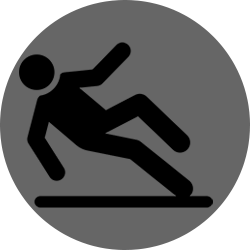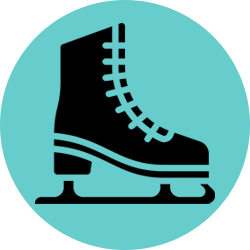Falls among older adults in Canada: Data blog
Summary of the most recent national-level statistics on fall-related deaths, hospitalizations, and emergency department (ED) visits among older adults in Canada.
- Last updated: 2023-12-04
Adults aged 65 years and older are at increased risk for falls. This risk can be attributed to a number of factors, which can include decreased mobility and balance, muscle weakness and visual impairment among individuals.Footnote 1 Fall-related injuries among older adults can have serious health and social consequences, impacting the quality of lives and even causing deaths.
In Canada, as the population ages and life expectancy increases, mortality rates associated with falls have increased by 111% between 2001 and 2019 among adults aged 65 years and older. Similarly, the number of fall-related hospitalizations in Canada among this population rose by 47% from 2008 to 2019Footnote * (this estimate excludes Quebec).Footnote 2 In 2018, it was estimated that the direct cost of fall-related injuries among Canadian adults aged 65 years and older was approximately $5.6 billion, a cost doubling that among those in the 25 to 64 years age groupFootnote3.
As adults aged 65 years and older are expected to represent over a fifth of the Canadian population by 2068Footnote 4, continuing to monitor fall-related injuries and deaths among this population and examining associated risk factors will be important measures that can help guide and inform prevention efforts. In this light, the Public Health Agency of Canada released a comprehensive report in 2022 presenting national-level health statistics on falls among adults aged 65 years and older using a variety of health data sources. This data blog builds on this report in that it provides the most recent national-level statistics on fall-related deaths, hospitalizations, and emergency department (ED) visits among older adults in Canada. Information on factors contributing to falls is also provided to help inform prevention efforts.

Deaths due to falls
Figure 1 presents numbers on deaths and mortality rates due to falls by age and sex. In 2021, 6,579 adults aged 65 years and older died of falls in Canada (this estimate excludes Yukon). As shown, mortality rates generally rose with age among both men and women. In each age group, men had higher mortality rates compared to women, yet women had a higher overall rate (95.9 per 100,000 vs 89.5 per 100,000). In total, more women died from falls (n =3,657) compared to men (n = 2,922), a finding reflecting the fact that there are more women than men aged 65 years and older in Canada.
Figure 1: Number of fall-related deaths and mortality rates, by age and sex, population aged 65 years and older, Canada (Yukon not included), 2021
| Age group (years) | Count (Men) | Count (Women) | Rate per 100,000 (Men) | Rate per 100,000 (Women) |
|---|---|---|---|---|
| 65 to 69 | 174 | 83 | 16.1 | 7.2 |
| 70 to 74 | 297 | 174 | 33.6 | 18.0 |
| 75 to 79 | 324 | 303 | 54.0 | 44.5 |
| 80 to 84 | 518 | 510 | 138.7 | 108.9 |
| 85 to 89 | 724 | 855 | 338.8 | 274.2 |
| 90+ | 885 | 1,732 | 800.9 | 733.9 |
| All 65+ | 2,922 | 3,657 | 89.5 | 95.9 |

Fall-related hospitalizations
Figure 2 presents numbers on fall-related hospitalizations and rates by age and sex. In 2022Footnote *, there were 78,076 fall-related hospitalizations (this estimate excludes Quebec) among adults aged 65 years and older, representing 88.6% of all injury-related hospitalizations among this age group. Of these falls, women accounted for nearly two-thirds of such hospitalizations (n = 49,919). For both men and women, hospitalization rates increased with age, yet those among women were consistently higher compared to men. Over a third (34.4%) of fall-related hospitalizations (n = 26,848) among adults aged 65 years and older were associated with a hip fracture. For more information on hip fractures and other health statistics, please visit the Public Health Agency of Canada’s Canadian Chronic Disease Surveillance System.
Figure 2: Number of fall-related hospitalizations and rates, by age and sex, population aged 65 years and older, Canada (Quebec not included), 2022Footnote *
| Age group (years) | Count (Men) | Count (Women) | Rate per 1,000 (Men) | Rate per 1,000 (Women) |
|---|---|---|---|---|
| 65 to 69 | 3,703 | 4,635 | 4.4 | 5.1 |
| 70 to 74 | 4,330 | 6,067 | 6.4 | 8.1 |
| 75 to 79 | 4,923 | 7,871 | 10.0 | 14.1 |
| 80 to 84 | 5,279 | 9,139 | 17.8 | 24.7 |
| 85 to 89 | 5,284 | 10,143 | 31.9 | 42.8 |
| 90+ | 4,638 | 12,064 | 53.2 | 68.0 |
| All 65+ | 28,157 | 49,919 | 11.0 | 16.6 |

Fall-related emergency department visits
Figure 3 presents fall-related emergency department (ED) visits and rates by age and sex. In 2022Footnote *, there were 200,825 fall-related ED visits reported in Ontario and Alberta among adults aged 65 years and older. Of these ED visits, nearly two-thirds were among (n = 126,765) women. Similar to hospitalizations, ED rates increased with age for both men and women, and those among women were consistently higher compared to men.
Figure 3: Number of fall-related emergency department visits and rates by age and sex, population aged 65 years and older, Ontario and Alberta, 2022Footnote *
| Age group (years) | Count (Men) | Count (Women) | Rate per 1,000 (Men) | Rate per 1,000 (Women) |
|---|---|---|---|---|
| 65 to 69 | 13,998 | 21,657 | 26.5 | 37.9 |
| 70 to 74 | 13,653 | 21,586 | 32.9 | 46.4 |
| 75 to 79 | 13,499 | 21,768 | 44.7 | 61.9 |
| 80 to 84 | 12,231 | 20,608 | 65.8 | 87.1 |
| 85 to 89 | 11,469 | 19,783 | 109.1 | 129.5 |
| 90+ | 9,210 | 21,363 | 165.0 | 187.2 |
| All 65+ | 74,060 | 126,765 | 46.5 | 67.0 |

Factors contributing to falls among older adults
As presented in Table 1, there are many risk factors associated with falls, some of which stem from biological, behavioural, social/economic and environmental factors. Fall prevention efforts generally entail a multifaceted approach, consisting of a number of key strategies. At the individual level, for instance, participating in balance and strength exercises, obtaining proper sleep, eating well and staying hydrated are strategies that may reduce the risk of falls among older adults. At the community level, providing educational opportunities to older adults on fall prevention strategies (i.e knowledge of medical equipment, exercise programs and fall prevention skills), installing handrails and grab bars, and removing debris such as snow and ice from public walkways are examples of broader scale approaches. For more information on key strategies regarding fall prevention among older adults, please visit Government of Canada and Parachute websites.
Table 1: Factors contributing to falls- source: Government of British ColumbiaFootnote 1
| Factors | Examples |
|---|---|
| Biological |
|
| Behavioural |
|
| Social |
|
| Environmental |
|
Notes for the data
Data sources are as follows:
- Figure 1 - Statistics Canada's Canadian Vital Statistics- Death Database 2021
- Figure 2 - Canadian Institute for Health Information's Discharge Abstract Database 2022Footnote *
- Figure 3 - Canadian Institute for Health Information's National Ambulatory Care Reporting System 2022 Footnote *
Counts were based on International Statistical Classification of Diseases and Related Health Problems, Tenth Revision (ICD-10) codes W00–W19.
You might also be interested in
Injuries from winter sports and activities
Injury statistics on popular winter sports and activities.
Poisonings and injuries related to carbon monoxide exposure
A summary of statistics highlighting unintentional poisonings and injuries related to carbon monoxide exposure.
- Date modified:


